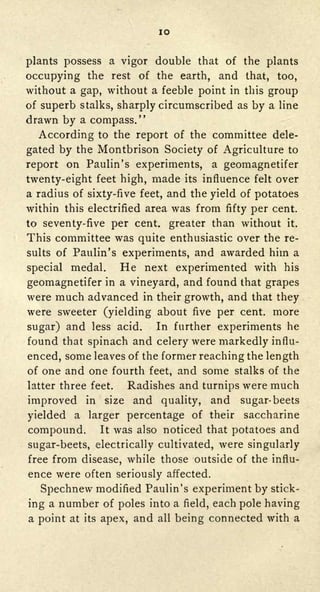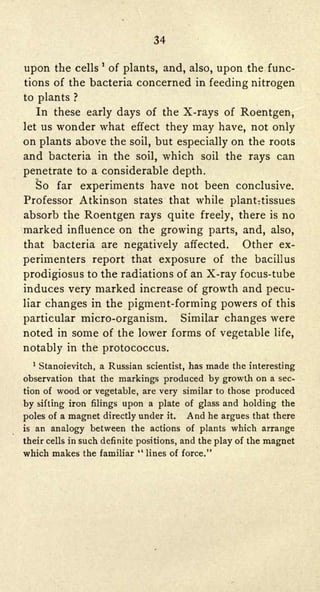1) In 1891, Paulin of the Agricultural School at Beauvais, France began experiments applying electricity from the atmosphere to plant roots and soil. He erected a tall pole called a "geomagnetifer" to draw down atmospheric electricity and distribute it underground.
2) His experiments found that potatoes grew up to 75% more within the electrified area. Grapes also matured faster and were sweeter with about 5% more sugar. Spinach, celery, radishes, and turnips also saw improvements in size and quality.
3) The results convinced the local agriculture society committee, who awarded Paulin a medal for his successful experiments in boosting crop yields with atmospheric electricity.































































